Renewable Energy Achievement Shortlisted Finalists
Listing is in alphabetical order of council entrant name
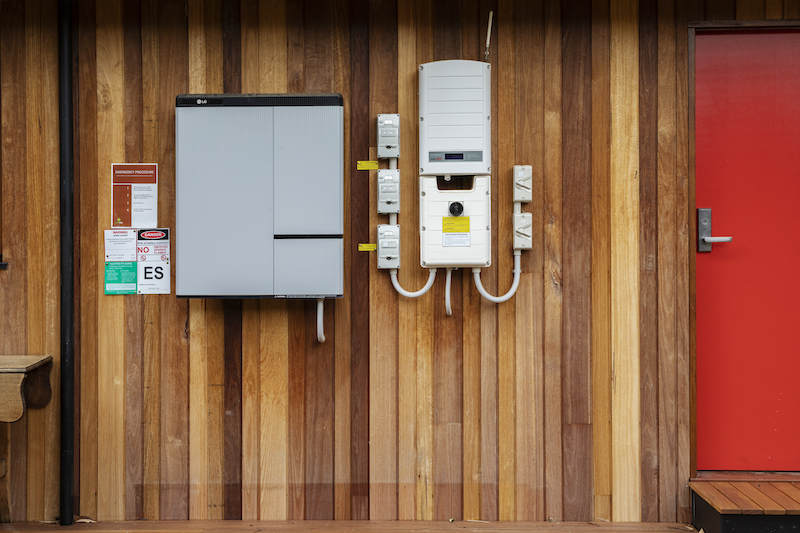
ACT Government: Next Generation (Next Gen) Energy Storage Program
As a world leader in action on climate change, the ACT Government’s Next Generation Energy Storage (Next Gen) program supports the roll-out of up to 36MW of solar battery storage in up to 5,000 homes and small businesses. The number of systems installed to-date is around 1,200, with installation rates constantly increasing.
Data collected from the ‘smart’ batteries installed under the program (available through an online platform) opens significant research and development opportunities which, together with the ACT’s other energy investments, ensures the ACT continues to be at the centre of the global renewable energy revolution.
The Next Gen program, with its smart requirements, enabled a world-first virtual power plant, grouping together individual solar battery systems to sell energy back to the grid when it’s needed most.The Next Gen program is funded at no cost to the ACT Budget using a $25 million ‘energy storage contribution’ from successful bidders in the ACT’s 2016 wind auction. As well as delivering renewable electricity at record low prices, our auction program leveraged, and continues to deliver, significant local benefits.
The Next Gen program is part of a wider range of ACT sustainable energy programs, supporting collaborative approaches between industry, householders and Government.
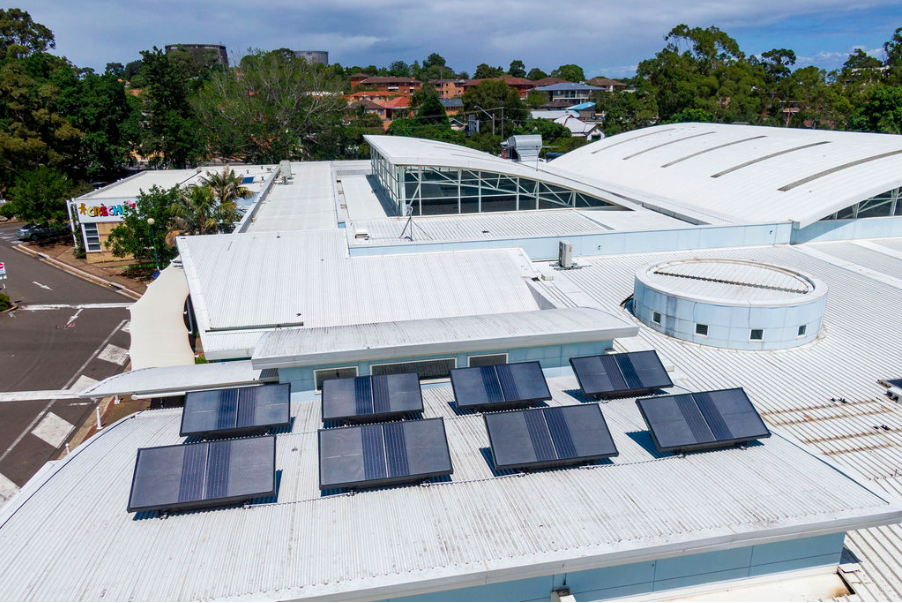
Georges River Council (NSW) Hydropanels at Hurstville Aquatic Centre
After adopting Energy and Water Management Plans in August 2018, Council has progressed towards energy efficiency targets at selected Council facilities, with a focus in one of the top energy users of energy – Hurstville Aquatic Centre.
The projects implemented on the Centre so far have included updating LED lights and sensors in the car-park area and other areas within the facility as well as installing a BMS System that creates opportunities to track data and find energy savings by changing operational activities and settings.
One of the main achievements has been installing eight hydropanels on the roof in December 2018. This renewable energy innovation is unique as it does not require connection to either a water source or electricity making it totally self sufficient. This project has seen Council meet one of its sustainability goals.
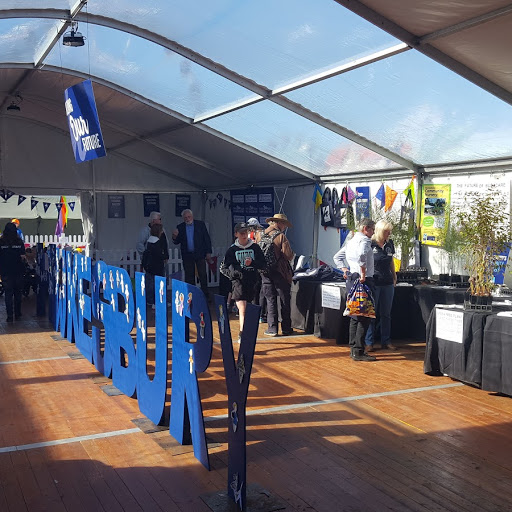
Hawkesbury City Council (NSW) – City Solar Program
The Hawkesbury City Solar Program involves the installation of approximately 2,780 solar panels equating to 720kW of solar power across 12 Council sites in the Hawkesbury Local Government Area. It will provide cost savings of $190,000 in energy bills each year for the community. This program demonstrates that Council is taking the lead on climate change in our community and helping to create a sustainable Hawkesbury by slashing 800 tonnes of carbon emissions annually while also providing cost savings for the community.
The Hawkesbury City Solar Program is part of the Western Sydney Regional Light Years Ahead program, an energy efficiency initiative helping Western Sydney Councils invest in energy saving and renewable technologies such as LED street lighting, solar panels, HVAC systems, insulation, and energy saving appliances.
Coordinated by the Western Sydney Regional Organisation of Councils (WSROC) on behalf of nine participant Councils, Light Years Ahead has already replaced over 20,000 high energy street lights with more efficient LED technology with projected savings of over $25.4 million in energy bills and 120,000 tonnes of emissions.
The Hawkesbury Solar Program is the first renewable energy project under Light Years Ahead and will pave the way for other solar investment across Western Sydney.

Logan City Council (QLD) 3x100KW Solar Systems
One of the strategic objectives of Logan City Council’s Carbon Reduction Strategy and Action Plan is embracing innovative renewable energy technology. This plan has also set a carbon neutrality target by 2022 for Council’s operations. To deliver on the Plan’s strategic objectives and targets, an assessment of Council’s major facilities was undertaken to prioritise the best sites for solar PV installations with respect to economic, environmental and social outcomes. This assessment lead to three large Council facilities implementing 100 kilowatt (kW) rooftop solar installations resulting in annual electricity savings of almost $60,000 and a reduction of 332 tonnes of CO2 emissions annually.
Council has also installed an Australian first off grid power solution at the Round Mountain water reservoir. The Carbon Reduction Strategy and Action Plan not only provides a holistic framework to achieve carbon neutrality but also articulates real world actions to achieve its goals with a focus on community engagement and being a role model for the broader community and business network.
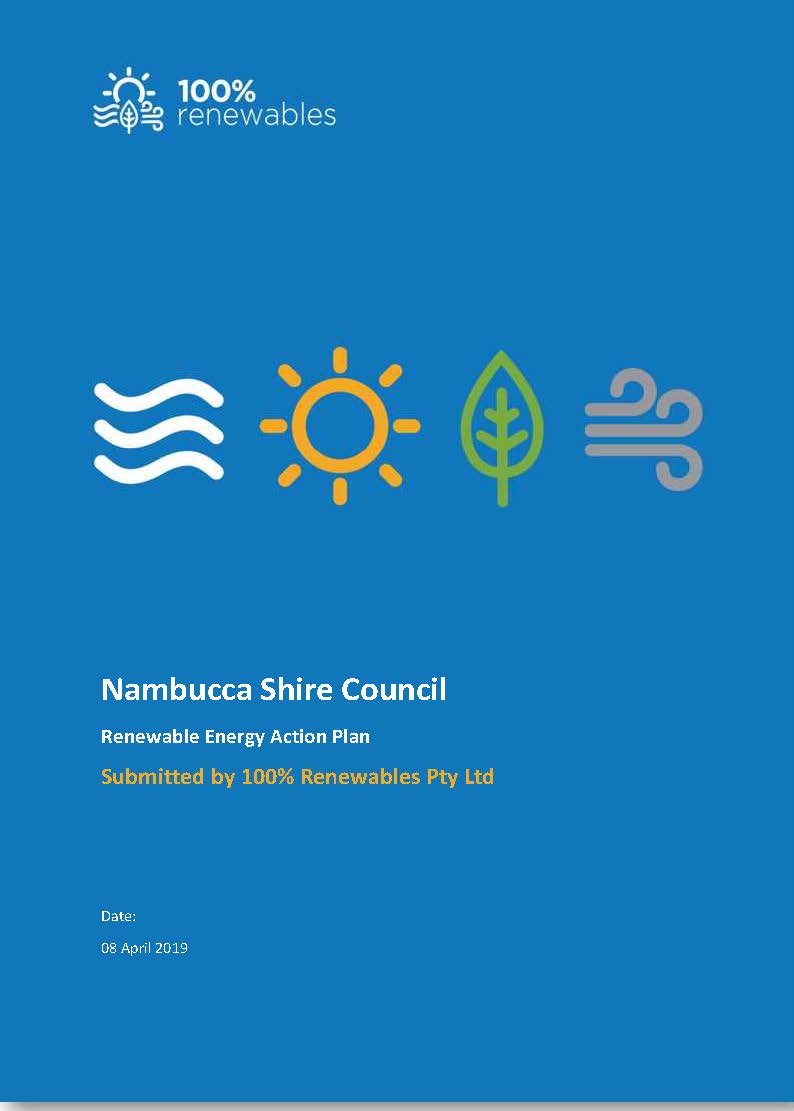
Nambucca Shire Council (NSW) Renewable Energy Action Plan
Nambucca Shire Council had a commitment to transition to renewable energy, but needed a clear direction and plan as to how to achieve maximum results for our community – both with respect to timeframe and cost. We took the step of having a Renewable Energy Action Plan formulated showing short, medium and long term actions, expected financial benefits and emissions reductions. Our plan has now been finalised and adopted by Council and our first project, installing a 50kW system on Council’s administration building, is currently underway.
Funds have been budgeted in our Environmental Levy to enable actions to be carried out, plus we are having a financing plan formulated to ensure the REAP is carried out with maximum benefits. It is hoped that part of this will include a Revolving Energy Fund. If all actions are undertaken, Council will install over 263kW worth of solar systems on Council’s assets.
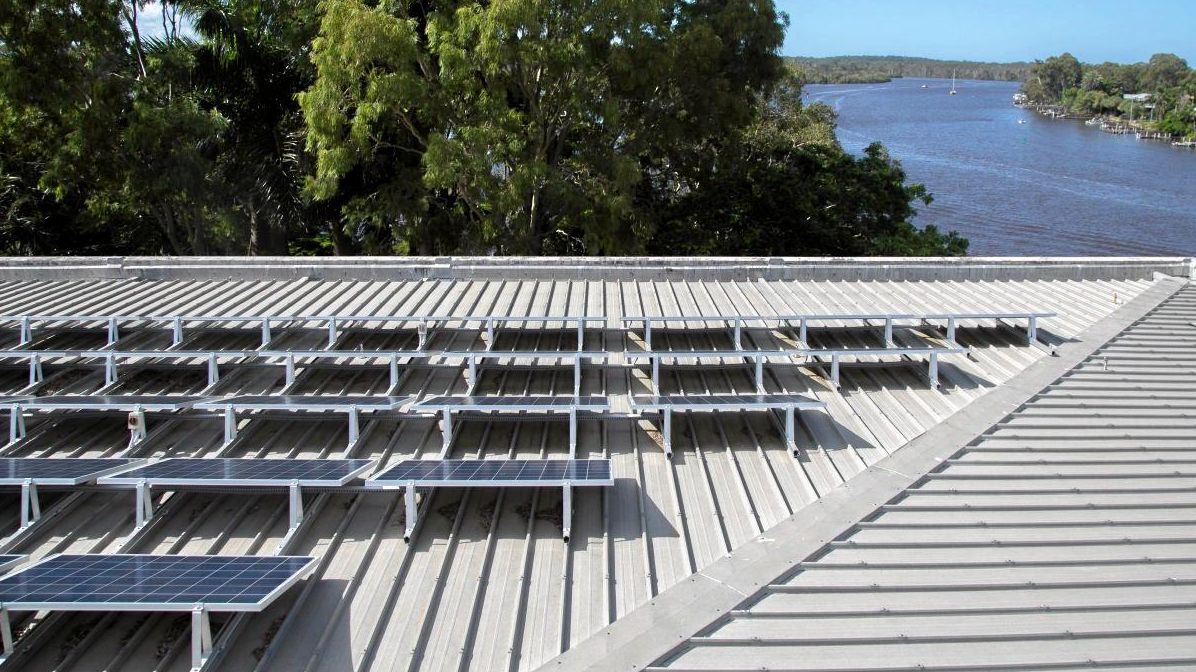
Noosa Council (QLD) – Renewable Energy for Zero Emissions Noosa
Noosa Council has a very ambitious target for its operations to be Net Zero Emissions (ZEN) by 2026. To get there, Noosa Council calculating its carbon footprint and decided to focus on its electricity consumption and emissions from the grid. To determine the most cost effective ways to reduce emissions, Council commissioned a Level 2 Energy Audit of its highest consuming buildings. The project identified 23 energy efficiency and renewable energy projects that would reduce emissions and provide a positive return for Council compared to business as usual.
To determine the priorities for Council budget over the coming years a marginal abatement cost curve (MACC) was developed. Council is currently working through these projects. Since May 2018, Council has progressively installed 377 kW of solar PV across 9 Council buildings. The annual generation is expected to be 579 kWhrs per annum, enough electricity to power to power 100 Queensland homes and saving 457 tonnes of CO2e.
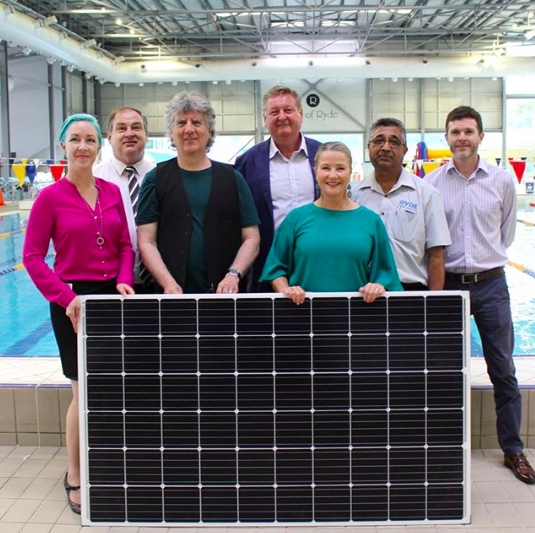
City of Ryde (NSW) Ryde Aquatic Leisure Centre Solar PV system
The Ryde Aquatic Leisure Centre Solar PV system was installed in August 2018. The 300.33 KW system is estimated to save over 315T of greenhouse gas emissions and reduce electricity consumption by 366MWH per year, producing an approximate annual saving of $35,000.
This project compliments the range of other renewable energy projects completed or in progress over the last 12 months that are increasing investment in cleaner energy solutions across. This includes divesting from fossil fuels in our investment portfolio, participation in the 19 council SSROC power purchase agreement (PPA) and ongoing community education programs.
Towards increasing renewable energy uptake within our community, residents can join Council’s free ‘Home Waste Sustainability Advisory Service’ which provides sustainability advice on encouraging solar uptake or how to reduce their home’s ecological footprint.
Council also joined APVI’s SunSpot solar tool providing residents access to assess their own home’s suitability for Solar. Most recently, Council declared a ‘Climate Emergency’ endorsing a statement that climate change represents one of the greatest threats to humanity and civilisation. These renewable achievements represent only a portion of the journey council is undertaking towards reducing our greenhouse gas emissions and in building resilience for climate change.
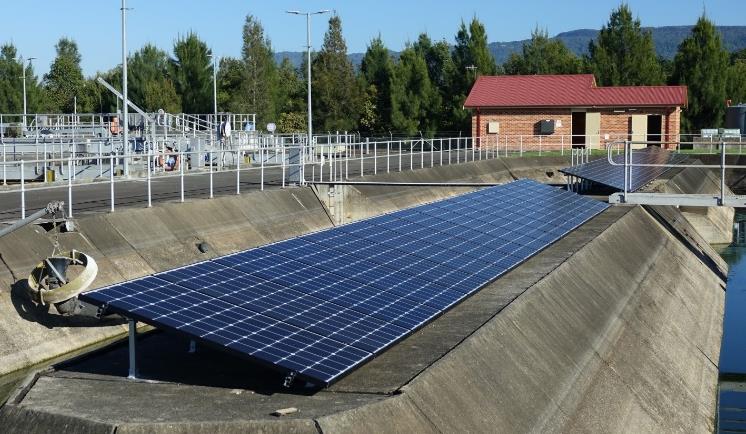
Shoalhaven City Council (NSW) Charging Ahead with Renewables
Shoalhaven City Council is charging ahead with renewable energy in its efforts to mitigate against climate change impacts. Council has recently adopted a Sustainable Energy Policy which sets out targets to generate or source renewable energy and reduce carbon emissions. The Policy extends to developing actions to transition towards electric vehicles, battery storage and upgrading to LED street lighting.
Establishing an internal Revolving Energy Fund (REFund) as a mechanism to generate funds from energy efficiency project savings to support future renewable energy initiatives has also been adopted. A number of solar photovoltaic (PV) systems have been installed and/or approved in 2018/19, including a large 81kW solar array on the iconic Shoalhaven Entertainment Centre. The Berry Wastewater Treatment Plant now has a 22.5kW solar PV system ground mounted on a diused Passveer channel, coupled with a 20kWh storage battery to optimise the variable electrical loads of the plant.
The Bamarang Water Treatment Plant also now supports a rooftop 25kW solar PV system converting clean energy into clean water. In 2018/19, Council also engaged an Energy Management Coordinator position, partnered with Repower Shoalhaven community group on the Social Access Solar Garden project and prepared ‘Energy Matters’ fact sheets for improved communications.
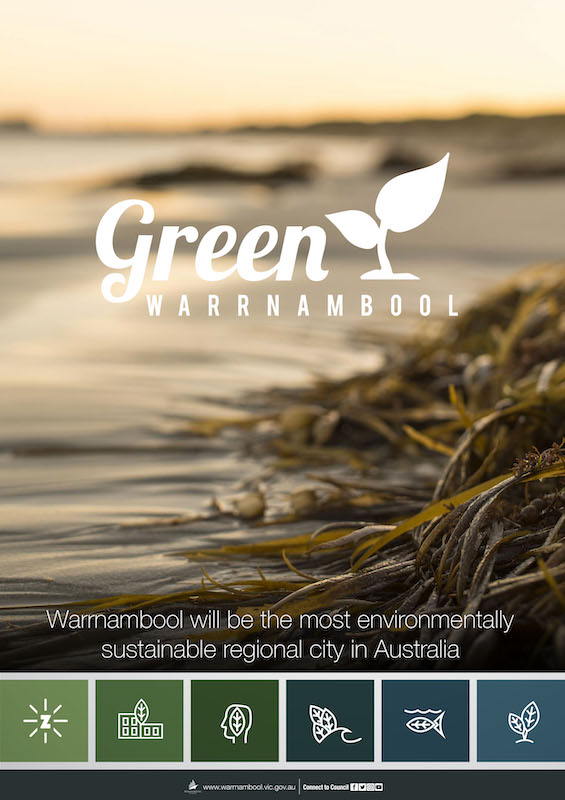
City of Warrnambool (VIC) Green Warrnambool
The Green Warrnambool Plan reflects the community aspirations for the City and is a roadmap for creating a more environmentally sustainable and resilient future. The plan takes strategic steps to address specific issues confronting the municipality but also global issues such as climate change.
Green Warrnambool is a highly aspirational strategy which will lead actions towards improving sustainability performance for Council operations and the City. This initiative includes several actions to be completed by Council and the community in order to achieve the sustainable and environmental goals. This plan provided the strategic direction for several projects to be instigated and implemented.
Green Warrnambool sets a new vision for the city: that Warrnambool will be the most sustainable regional city in Australia